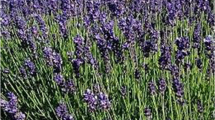Abstract
Stephania tetrandra S. Moore (Hang Fang Ji) is used in traditional Chinese medicine as a diuretic, an antiphlogistic, and an antirheumatic. The name “fang ji” is applied to at least four different genera of plants, including Aristolochia fangchi Y. C. Wu ex L. D. Chow and S. M. Hwang, Cocculus orbiculatus (L.) DC., Stephania tetrandra S. Moore, and Sinomenium acutum Rehder and E. H. Wilson. Due to similarity in the use of their common names, Stephania tetrandra S. Moore is often confused with Aristolochia fangchi Y. C. Wu ex L. D. Chow and S. M. Hwang, which has potentially dangerous consequences. To aid rapid and easy differentiation between the roots of these four species, so as to avoid possible contamination, detailed macroscopic and microscopic observations were made using stereo-and light-microscopy. The powdered samples were further analyzed using HPLC.




Similar content being viewed by others
References
De Smet P, Keller K, Hansel R (1992) In: Chandler R (ed) Adverse effects of herbal drugs, vol 1. Springer, New York
Chen HA, Xu GJ, Jin R, Xu LS (1990) Hong Kong samples of the traditional Chinese medicine “Fang Ji” contains aristolochic acid toxins. China J Chin Mat Med 15:707–708
Zhu M, Phillipson JD (1996) Hong Kong samples of the traditional Chinese medicine “fang ji” contain aristolochic acid toxins. Int J Pharmacognosy 34:283–289
Huang KC (1999) The pharmacology of Chinese Herbs. CRC, Boca Raton
Venhaerweghem JL, Depierreux M, Tielemans C, Abramowicz D, Dratwa M, Jadoul M, Richard C, Vandervelde D, Verbeelen D, Vanhaelen-Faster R (1993) Rapidly progressive interstitial renal fibrosis in young women: association with slimming regimen including Chinese herbs. Lancet 341:387–391
Nortier JL, Deschodt-Lanckman MM, Simon S, Thielemans NO, de Prez EG, Depierreux MF, Tielemans CL, Richard C, Lauwerys RR, Bernard AM, Vanherweghem JL (1997) Proximal tubular injury in Chinese herbs nephropathy: monitoring by neutral endopeptidase enzymuria. Kidney Int 51:288–293
Antonia JC, Geoffrey M, Terry C, Geoffrey CK, Simmonds MSJ, Pusey CD (2002) Aristolochic acid as a causative factor in a case of Chinese herbal nephropathy. Nephrol Dial Transpl 17:524–525
Blatter A, Reich E (2004) Qualitative and quantitative HPTLC method for quality control of Stephania tetrandra. J Liquid Chromatogr Relat Technol 27:2087–2100
Acknowledgments
This work was funded in part by the Food and Drug Administration contract “Botanical Dietary Supplements: Science-Base for Authentication”, FD-U-002071.01. We are also thankful to Beijing Yuke Botanical Development Co. Ltd. China and Division of Chinese Materia Medica for providing authenticated samples and to Roy Upton for his comments and suggestions.
Author information
Authors and Affiliations
Corresponding author
Rights and permissions
About this article
Cite this article
Joshi, V.C., Avula, B. & Khan, I.A. Authentication of Stephania tetrandra S. Moore (Fang Ji) and differentiation of its common adulterants using microscopy and HPLC analysis. J Nat Med 62, 117–121 (2008). https://doi.org/10.1007/s11418-007-0200-5
Received:
Accepted:
Published:
Issue Date:
DOI: https://doi.org/10.1007/s11418-007-0200-5




